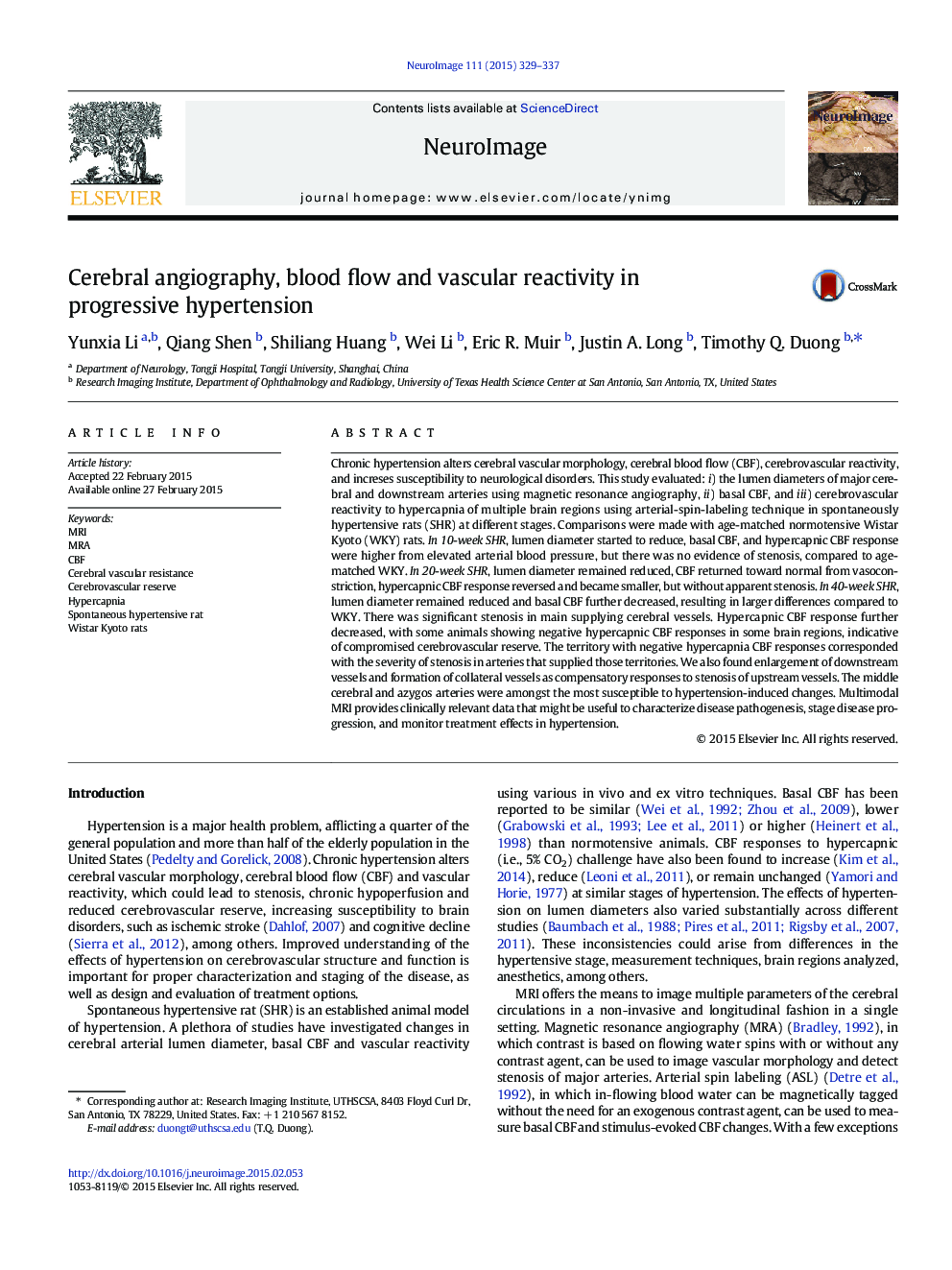| کد مقاله | کد نشریه | سال انتشار | مقاله انگلیسی | نسخه تمام متن |
|---|---|---|---|---|
| 6025471 | 1580896 | 2015 | 9 صفحه PDF | دانلود رایگان |
- Hypertensive rats show abnormal cerebral MRA, blood flow, and vascular reactivity.
- There are regional differences in poor cerebrovascular reserve.
- Regions with negative hypercapnia-induced CBF response are correlated with stenosis.
- These parameters change progressively worse with age.
Chronic hypertension alters cerebral vascular morphology, cerebral blood flow (CBF), cerebrovascular reactivity, and increses susceptibility to neurological disorders. This study evaluated: i) the lumen diameters of major cerebral and downstream arteries using magnetic resonance angiography, ii) basal CBF, and iii) cerebrovascular reactivity to hypercapnia of multiple brain regions using arterial-spin-labeling technique in spontaneously hypertensive rats (SHR) at different stages. Comparisons were made with age-matched normotensive Wistar Kyoto (WKY) rats. In 10-week SHR, lumen diameter started to reduce, basal CBF, and hypercapnic CBF response were higher from elevated arterial blood pressure, but there was no evidence of stenosis, compared to age-matched WKY. In 20-week SHR, lumen diameter remained reduced, CBF returned toward normal from vasoconstriction, hypercapnic CBF response reversed and became smaller, but without apparent stenosis. In 40-week SHR, lumen diameter remained reduced and basal CBF further decreased, resulting in larger differences compared to WKY. There was significant stenosis in main supplying cerebral vessels. Hypercapnic CBF response further decreased, with some animals showing negative hypercapnic CBF responses in some brain regions, indicative of compromised cerebrovascular reserve. The territory with negative hypercapnia CBF responses corresponded with the severity of stenosis in arteries that supplied those territories. We also found enlargement of downstream vessels and formation of collateral vessels as compensatory responses to stenosis of upstream vessels. The middle cerebral and azygos arteries were amongst the most susceptible to hypertension-induced changes. Multimodal MRI provides clinically relevant data that might be useful to characterize disease pathogenesis, stage disease progression, and monitor treatment effects in hypertension.
Journal: NeuroImage - Volume 111, 1 May 2015, Pages 329-337
